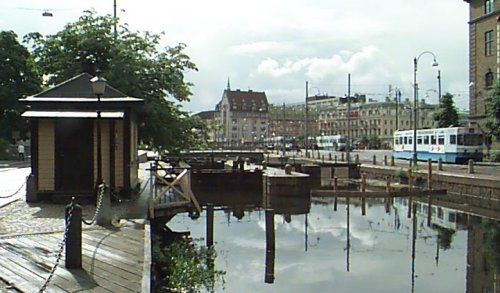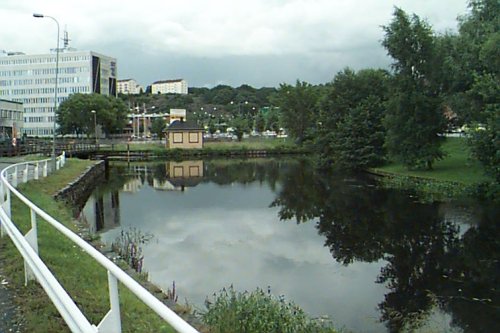
Frome the beginning the it was called Stampån or Mölndalskanalen. Stampån (stampcreek) because of the stamping mills that were situated here just outside town, and Mölndalskanalen because ittook it's water from Mölndalsån. One of these stamping mills, owned by the mayor Hans von Gerdes, was later rebuit to a poorhouse. The poorhouse was designed by the town architect Bengt Carlberg in 1767. You can still see this house by the canal. It's a low red and wooden house on the north side of the canal. Beside this poorhouse a poorhouse church was built too. The church is still there and now it is called Maria Church. The Swedish word for poorhouse is fattighus so that is why the canal nowadays is called Fattighusån.
© Text written by Ingrid Wirsin
Ingrid Wirsin is a welknown journalist in Gothenburg, with a special feeling for buildings and history.

The lock-keepers hut, the lock, the dam and at right Drottningtorget.

The dam and the lock seen from west.

This is the start of Fattighusån. From the right comes Mölndalsån with fresh water to Gothenburg. Towards left is the natural outlet of Mölndalsån towards Säveån and Göta River. But here Mölndalsån changes name to Gullbergsån.
© Text 2001 by Ingrid Wirsin. © Pictures by Bosse Arnholm, 1999
![]() Click here to get back to the main Gothemburg-page.
Click here to get back to the main Gothemburg-page.
This page was last modified at